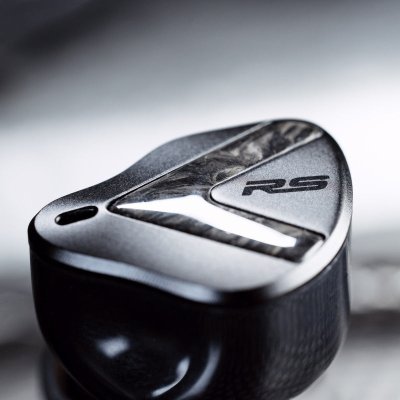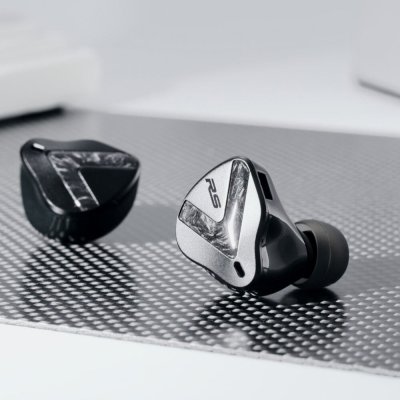Subtonic STORM and Softears RSV MK II use 5BA+2EST+2SLAM and 5BA driver setups respectively. Subtonic STORM costs $5,200 while Softears RSV MK II costs $700. Subtonic STORM is $4,500 more expensive. Subtonic STORM holds a decisive 1-point edge in reviewer scores (9.2 vs 8.1). Subtonic STORM has better bass with a 0.6-point edge, Subtonic STORM has better mids with a 0.6-point edge, Subtonic STORM has better treble with a 0.8-point edge, Subtonic STORM has significantly better dynamics with a 1.8-point edge, Subtonic STORM has significantly better soundstage with a 1.5-point edge, Subtonic STORM has significantly better details with a 1.8-point edge and Subtonic STORM has significantly better imaging with a 1-point edge.
Insights
| Metric | Subtonic STORM | Softears RSV MK II |
|---|---|---|
| Bass | 8.7 | 8.1 |
| Mids | 8.4 | 7.8 |
| Treble | 8.7 | 7.9 |
| Details | 9.7 | 7.9 |
| Soundstage | 9.5 | 8.1 |
| Imaging | 9 | 8 |
| Dynamics | 9.5 | 7.8 |
| Tonality | 9.1 | 8.4 |
| Technicalities | 9.3 | 7.9 |
Subtonic STORM Aggregated Review Score
Average Reviewer Scores
Average Reviewer Score:
9.2Outstanding
Softears RSV MK II Aggregated Review Score
Average Reviewer Scores
Average Reviewer Score:
8.1Very Positive
Reviews Comparison
Subtonic STORM reviewed by Jays Audio
Youtube Video Summary
Most IEMs inevitably introduce flaws that shatter musical immersion—be it harsh treble, shouty vocals, or unbalanced bass. These imperfections act as chains, binding the listener and preventing that elusive state of pure, uninterrupted freedom within the music. While the OG EJ07 came close, even it faltered on certain tracks, its forward vocals becoming a jarring distraction when pushed hard. The Subtonic Storm, however, shatters this pattern entirely.
Contrary to its name, the Storm represents the eye of the hurricane—a sanctuary of pure, effortless sound. It liberates the music from tuning flaws, presenting it naturally and tranquilly. There are zero distractions or attachments holding the listener back, enabling deep introspection and complete immersion, as if conversing directly with the singer or instrument. This profound, intangible quality—achieving that free state—is why it's considered the best IEM, offering unmatched resolution, separation, and imaging, albeit at an astronomical $5,000 price point.
Value-wise, the Storm is undeniably terrible; the KZ ASF ($250) gets you 80% there, and the Monarch MKII ($1,000) delivers 95%. It's a luxury item, justified only by its unique, unmeasurable ability to dissolve worldly distractions and forge total oneness with the music. Crucially, it's not for everyone: Bass heads, background listeners, or those enjoying J-pop/K-pop/EDM will find far better value elsewhere under $300. Only those deeply seeking musical transcendence, with ample disposable income, should even consider it. For everyone else, stay away—you simply don’t need it.
Jays Audio Youtube Channel
Softears RSV MK II reviewed by Jays Audio
Youtube Video Summary
Softears RSV MK2 shifts from the OG’s vocal-centric tilt into a bass-forward all-rounder. The sub-bass and mid-bass hit with real slam and weight, giving drums and bass guitars a satisfying, dynamic punch. Upper mids (3–6 kHz) are tamed to avoid shout, while a gentle 1–2 kHz rise keeps vocals open and natural—slightly less pushed than the original but still clear. Treble is smooth with decent air; not super sparkly and there’s no EST “sauce,” but it stays clean and non-fatiguing.
As a package, MK2’s standout is the low-end texture—thunderous yet controlled—making it one of the more engaging bassy sets under four figures. Technical performance is solid for the tier, though some rivals at lower prices bring more raw detail and EST extension. Build and accessories get a tasteful, modern refresh. For best balance, the stock tips work well; bass-boosting or treble-opening tips can shift it toward a more V-shape at the expense of overall smoothness.
On genre fit, MK2 shines with hip-hop, pop, EDM, and R&B, where its punch and warmth bring rhythms to life; for orchestral or leaner acoustic picks, the bass can edge forward depending on the mix. It scales to mid–high volumes nicely (around the 70–80 dB zone) without turning sharp. Compared with the OG RSV—now likely affected by a silent retune in recent units—the MK2 is the safer buy: less shout, more authority down low, and a broader all-rounder appeal. Recommended, especially if found below full MSRP, for listeners craving tasteful bass with natural mids and relaxed, smooth treble.
Jays Audio Youtube Channel
Buy Softears RSV MK II on Linsoul
Ad
Price: $699
Buy Softears RSV MK II on Linsoul
Subtonic STORM reviewed by Head-Fi.org
Softears RSV MK II reviewed by Head-Fi.org
Subtonic STORM reviewed by Web Search
The Subtonic Storm delivers a balanced sound signature characterized by a generous sub-bass boost, neutral midrange, and an elevated, articulate treble response. Its standout feature is the implementation of proprietary SLAM drivers—custom balanced armatures handling separate sub-bass and mid-bass frequencies—which produce exceptional slam and texture rivaling dynamic drivers. The treble exhibits deliberate, controlled peaks between 5-15kHz, contributing to vividness without harshness, though some listeners may note a slight roll-off past 16kHz.
Technically, the Storm sets a high bar with class-leading dynamics, micro-detail resolution, and driver coherence across its hybrid array. Staging offers strong width and depth but lacks a cohesive center image. Ergonomically, the titanium shells are bulky and heavy, causing fatigue during extended use, and the stock cable is often criticized for stiffness. Additionally, its low sensitivity demands powerful amplification, limiting portability.
Softears RSV MK II reviewed by Web Search
The Softears RSV MK II refines the original RSV with an all-5BA design and a 4-way crossover, targeting a stable “reference sound” while improving driver control and airflow management. It’s easy to drive at 122 dB/Vrms, 7 Ω, and the build mixes medical-grade resin with CNC-milled aluminum and forged carbon for a robust, low-resonance shell; MSRP is $699.
On paper, the tuning remains neutral with a bass lift: dual Knowles CI22955 woofers aim to give BA-bass more texture and weight, an improved ED driver anchors clean mids, and a SWFK unit handles upper treble for a smoother, less fatiguing top end. Softears’ LRC network and dual pressure-relief approach target consistent FR and reduced ear pressure, which should aid long listening sessions and imaging stability.
Subjectively, this positions the RSV MK II as a coherent, midrange-centric set with tight, controlled low-end rather than maximal slam, and a smooth treble that trades sparkle for fatigue-free listening. Soundstage is moderately wide with tidy imaging; technicalities are competitive for the class but won’t chase ultra-etched detail specialists. Given the tuning goals and efficient drive requirements, value will appeal most to listeners prioritizing tonal accuracy and midrange timbre over sheer sub-bass impact or treble air.
Subtonic STORM (more reviews)
Subtonic STORM reviewed by Yifang
Youtube Video Summary
Subtonic STORM arrives as a spectacle: a limited run of 50 units presented in a hefty suitcase-style box that feels close to 2 kg. The unboxing greets with a personalized card and serialized plate—in this case marked “STORM 019.” Accessories are equally premium: a neatly organized tip case and a Singaporean handmade leather pouch crafted from aged Italian leather, signaling boutique attention to detail before the earphones even leave the case.
The earpieces show off a golden “stormy” faceplate evoking mythic cloud imagery, backed by hand-enameled black paint so meticulous that one in three plates is discarded to meet quality standards. Even the stock cable is positioned as ultra-high end, quoted at around $2,500 with an intricate crystal-lattice design. Price is acknowledged as “way too much money”, yet the presentation unabashedly stakes a claim as the world’s best IEM. This video stays focused on the unboxing and build; a full listening review is teased for a later date.
Yifang Youtube Channel
Subtonic STORM reviewed by Shuwa-T
Subtonic STORM reviewed by Precogvision
Precogvision Youtube Channel
Subtonic STORM reviewed by Tim Tuned
Youtube Video Summary
Subtonic STORM closes the list as the ultra-high-end, “one-and-done” pick—the kind of most expensive flagship that needs no hype because the name says it all. Chosen for a “versatile” roundup, it’s framed as the endgame option for those who want a single IEM to cover everything and have the budget to match—cue the playful “rich boys” jab.
The verdict is equal parts praise and pragmatism: demo first. STORM isn’t a blind-buy, and the price is so stratospheric it gets the tongue-in-cheek advice to sell a car, a house, or a kidney. In short, a summit-fi statement piece with serious one-set potential—but only after making sure the tuning truly clicks.
Tim Tuned Youtube Channel
Subtonic STORM reviewed by Gizaudio Axel
Gizaudio Axel original ranking
Gizaudio Axel Youtube ChannelSubtonic STORM reviewed by Smirk Audio
Subtonic STORM reviewed by Bad Guy Good Audio
Youtube Video Summary
Subtonic STORM lands as a $5,200 flagship built around novel SLAM balanced-armature tech: the dual BA “subwoofer” and “woofer” are separated and crossed over independently, joined by a regular BA mid-woofer, additional BA mids, BA mid-tweeter and tweeter, plus two EST—nine drivers total with a seven-point crossover. The result isn’t just another spec sheet; it’s a system that behaves like a rethought low-end engine that sets up everything above it.
On music, the bass ranks an honest 8/10 because it doesn’t sound like typical BA bass—there’s real weight without mid bleed, so male/female vocals, strings, and guitars stay pristine. Complex tracks reveal studio fingerprints: the 38 Hz triple drop on Big Boi’s “Kill Jill” slams; the glockenspiel in Springsteen’s “Born to Run” is crystal; Pink Floyd’s “On the Run” left-right sweeps and the early gate announcement snap into focus; Hendrix’s uneven production becomes obvious; and the Led Zeppelin IV kick-drum intro hits with the produced, swirling authority it should. From Vivaldi to hip-hop, it just handles the library.
Stage is spacious and speaker-like off good sources, with positional cues that outclass sets like Elysian Annihilator and even edge the Fatfreq Grand Maestro for resolution, stage, and tonality—though Grand Maestro’s multi-tuning keeps it competitive. Ignore treble “hacksaw” graph takes and target-chasing; the performance argues against strict adherence to Harman-style curves. Diminishing returns are real, but for those chasing something genuinely different, the STORM’s reworked BA low end and refined EST top end deliver a uniquely authoritative, all-genre presentation that’s hard to unhear.
Bad Guy Good Audio original ranking
Bad Guy Good Audio Youtube ChannelSoftears RSV MK II (more reviews)
Softears RSV MK II reviewed by
 Fresh Reviews
Fresh Reviews
Youtube Video Summary
The Softears RSV MK II is a 5BA set at $699 with a sleek, performance-driven look—carbon-fiber “V” and RS badge on the faceplate—paired to an ergonomic shell and fish-mouth nozzle that stays light and exceptionally comfortable over long sessions. The package is solid: a braided 4.4 cable (plus a 3.5 mm dongle), cleaning cloth, two pouches, and two sets of silicone tips; the only nitpick is wishing for a more premium carrying case at this price.
What sets RSV MK II apart is how a generous bass boost/extension coexists with top-tier imaging, separation, and layering. In Valorant, footsteps hit with extra energy and impact yet subtle cues—water steps, micro-movements—cut through even during Vandal spam and 5v5 ability chaos. In Battlefield the set is a standout for immersion (planes, tanks) while preserving precise gunfire placement and the light “clinks” that win fights. The latest mix in Apex plays to its strengths: thermites don’t mask light taps, elevation cues remain clear, slides and shield pops are easy to track; and in Call of Duty, airstrikes and mortar fire don’t swamp critical information. It’s scored as the lowest-priced S-tier on the WallHack-certified list—note the tonality skews a touch dark, so strict reference seekers may prefer something lighter, but for impactful low-end plus elite competitive clarity, RSV MK II is a killer pick.
Fresh Reviews original ranking
Fresh Reviews Youtube ChannelSoftears RSV MK II reviewed by Jaytiss
Youtube Video Summary
Softears RSV MK2 takes the original’s idea and pushes it into a bolder, bass-centric direction. The compact shell is comfortably contoured, isolates well, and uses a slightly recessed 2-pin; the angular faceplate gives off an “evil Voltron” vibe in the best way. Packaging and accessories feel premium—a silky cable terminated in 4.4 mm with a matching 3.5 mm adapter, tip selection, cleaning tools—though the bundled case looks nice while feeling a bit faux-leather and questionable for durability. Under the hood is a 5-BA array around the ~$700 mark, presented with the fit and finish expected at this tier.
The tuning is unabashedly bass-heavy with a warmer rise through ~150–200 Hz and a slightly dark-leaning top end; not super airy, but undeniably full, rich, and musical. That weight can introduce occasional roughness/sibilance in certain vocals and can muddy spoken-word content, so this isn’t for everyone. Within Softears’ catalog it stands out: far more low-end than RSV (OG), Volume S, Twilight or Studio 4, and a different philosophy than Enigma’s vivid upper-mids. Versus sets like Monarch MK4, this goes for a deeper, thumpier shelf with a gentler upper air—trading a bit of “technical” sheen for tonal density and groove.
As a “tactfully executed bass-head” Softears, RSV MK2 delivers: impactful low end, natural mids, comfortable build, and a coherent, down-sloping balance that suits modern music exceptionally well. It isn’t flawless—moments of aggressiveness, plus a case that feels more pretty than tough—but the overall package is compelling. In the $400–$900 bracket it scores a 9.4 on this scale, while strong lower-priced options (e.g., bass-shelf specialists like Punch-tuned sets) may satisfy similar cravings if budget leads. For listeners craving a plush, powerful low end done with intent, this is a distinctive and deeply enjoyable take from Softears.
Jaytiss Youtube Channel
Softears RSV MK II reviewed by Audionotions
Softears RSV MK II reviewed by Super* Review
Youtube Video Summary
Softears RSV MK II brings back the all-BA ethos at $700 with five armatures and a promise of “re-engineered BA bass.” Build and accessories feel premium (sleek shells, plush case), while the cable choice is quirky—4.4 mm only with a 3.5 mm pigtail. Fit is outstandingly secure and custom-like but on the larger side with a longer nozzle, so comfort depends on ear size. Softears’ Ultra Clear tips work well; the new metal-ring variant adds little beyond novelty.
On the graph, bass looks like gigabass, yet in ear it settles into a warm, weighty foundation without steamrolling the mids. The midrange follows a “new-meta neutral” tilt—fuller than Harman with forward upper-mids—while treble lands clean and sparkly without fatigue. Imaging is tidy rather than cavernous; separation and delineation are convincing, with the top end executed better than the bottom. BA bass here is among the more physical and satisfying of its kind, though tactility can be track-dependent and turn a bit tubby on very bass-heavy mixes.
Against peers, Symphonium Meteor sounds warmer and more “special” but less all-round; DUNU SA6 MK2 is more colored with janglier treble and the least convincing bass; 7th Acoustics Supernova trades warmth for vivid, bright-tilted imaging; Softears Studio 4 is lighter on bass and airier; and the old Moondrop S8 stays the lively, vocal-centric counterpoint. Net take: a supremely competent, character-light all-rounder that favors bass weight over panoramic staging. Verdict: 4/5 stars—a welcome throwback done right, and notably cheaper than the original RSV launch price.
Super* Review original ranking
Super* Review Youtube ChannelSoftears RSV MK II reviewed by Fox Told Me So
On the graph, it diverges from JM-1 or Harman, choosing its own path. Sub-200 Hz is elevated, giving the bass notable weight and warmth, but also risking congestion. A dip between 200–600 Hz thins mids and robs some body from vocals and instruments, though it does clean up edges. Then comes a surprising 14 kHz BA-driven peak, adding air, shimmer, and openness—rare for an all-BA set!
In practice, bass hits with real presence for BA, punchy and convincing though not as deep as DD. Mids lean slightly thin, a bit lack of density, making instruments less woody. Treble is airy and crisp thanks to that 14k lift, but may edge bright for sensitive listeners. Stage favors forward bass and a sense of openness, though not massive in depth.
Verdict: It’s bassy, airy, and a touch thin in the middle—a distinct tuning philosophy that stands apart from the crowd.
Fox Told Me So original ranking
Fox Told Me So Youtube ChannelSubtonic STORM Details
Driver Configuration: 5BA+2EST+2SLAM
Tuning Type: Neutral with Bass Boost
Brand: Subtonic Top Subtonic IEMs
Price (Msrp): $5,200
Support our free service! Buying through our affiliate links costs you nothing extra:
Softears RSV MK II Details
Driver Configuration: 5BA
Tuning Type: Neutral with Bass Boost
Brand: Softears Top Softears IEMs
Price (Msrp): $700
Support our free service! Buying through our affiliate links costs you nothing extra:
Subtonic STORM User Review Score
Average User Scores
Average User Score: n/a
Based on 0 user reviews
No user reviews yet. Be the first one who writes a review!
Softears RSV MK II User Review Score
Average User Scores
Average User Score: n/a
Based on 0 user reviews
No user reviews yet. Be the first one who writes a review!
Subtonic STORM Gaming Score

Gaming Score & Grade
- The gaming score is prioritizing technical capabilities of the IEM (Separation, Layering, Soundstage) and good value.
Gaming Score
7.7Gaming Grade
ASoftears RSV MK II Gaming Score

Gaming Score & Grade
- The gaming score is prioritizing technical capabilities of the IEM (Separation, Layering, Soundstage) and good value.
Gaming Score
8.9Gaming Grade
S-Subtonic STORM Scorings
Average Technical & Tuning Grades
Average Tunign Grade
S- Expect a breathtakingly coherent response that elevates musicality and precision in equal measure. It highlights musical intent with uncanny clarity.
Average Technical Grade
S- Expect an effortlessly clean presentation that keeps complex mixes perfectly organized. There is zero sense of congestion even at high volume.
Softears RSV MK II Scorings
Average Technical & Tuning Grades
Average Tunign Grade
A+- It delivers a coherent, natural timbre that remains captivating across genres. Acoustic instruments sound lifelike and textured.
Average Technical Grade
A- Overall technical control is strong, presenting instruments with clarity and sensible staging. Textures are portrayed with satisfying clarity.
Subtonic STORM User Reviews
"This is an example review"
Pros
- Example pro 1
- Example pro 2
Cons
- Example con 1
- Example con 2
Share your experience and build your personal ranking list.
You need to be signed in to write your own reviewSoftears RSV MK II User Reviews
"This is an example review"
Pros
- Example pro 1
- Example pro 2
Cons
- Example con 1
- Example con 2
Share your experience and build your personal ranking list.
You need to be signed in to write your own reviewBuy Softears RSV MK II on Aliexpress
Ad
Price: $699
Buy Softears RSV MK II on Aliexpress
Find your next IEM:
IEM Finder Quiz
newIEM Comparison Tool
newVS




























